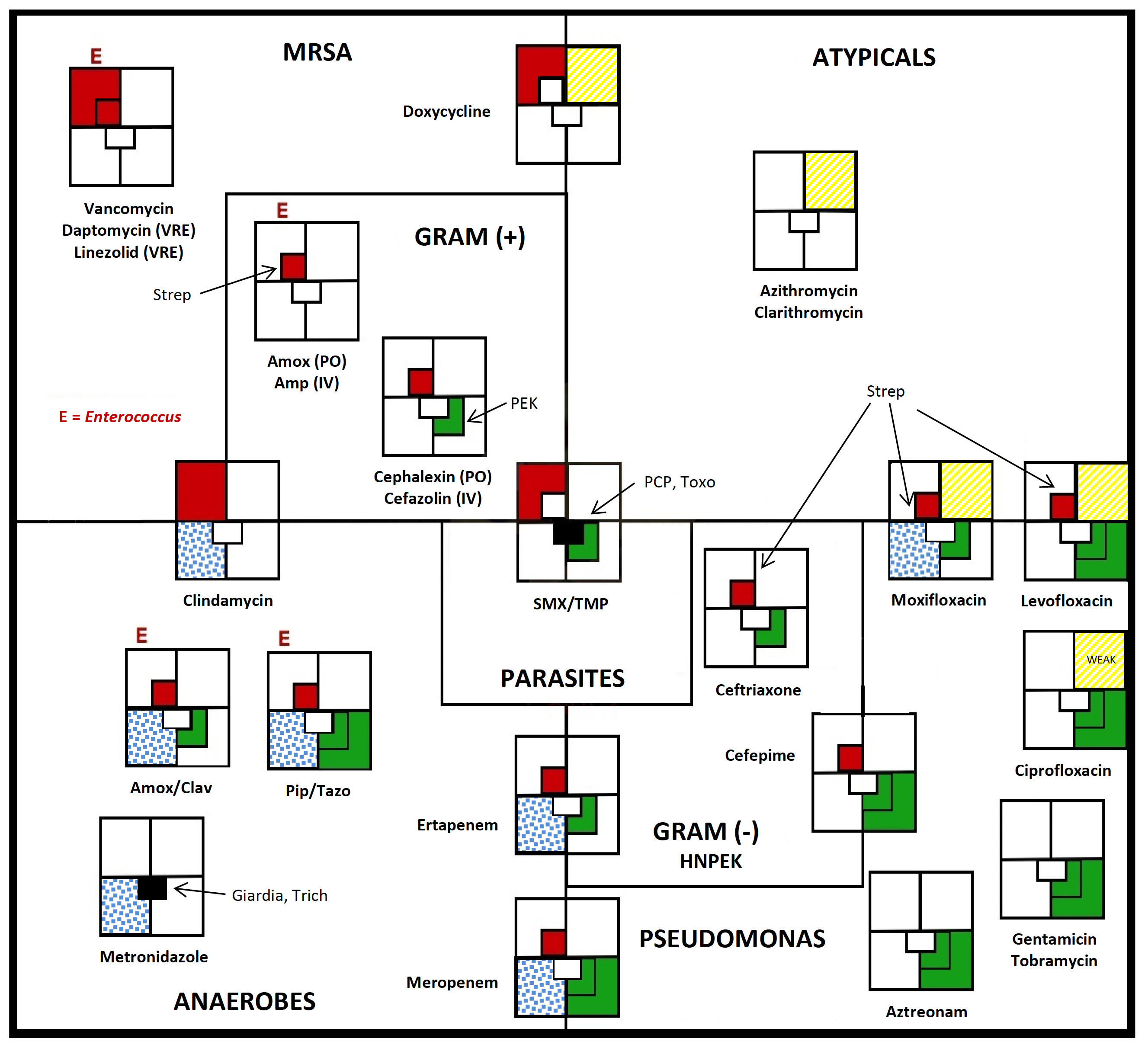Antibiogram - What antibiotic covers this bug???

This is an antibiogram that I used during medical school at UCSF. I think it was created by the pharmacology department at San Francisco General Hospital. This diagram is so helpful for visual learners like me. I'll go through as best I can based on the colors and quadrants of the diagram.
- Red - this color represents gram positive bacteria. All drugs listed in the left upper quadrant (LUQ) have gram positive coverage.
- The outer section of the LUQ represents MRSA coverage.
- In this area we see that vancomycin, daptomycin, linezolid, doxycycline, and clindamycin, and TMP/SMX (Bactrim) all cover MRSA. On the other hand, amoxicillin, ampicillin, cephalexin cover gram-positives excluding MRSA.
- Yellow - this color represents atypical bacteria.
- Drugs that cover atypicals include doxycycline, azithromycin, moxifloxacin, levofloxacin, and ciprofloxacin (weak).
- Green -represents gram negative bacteria. The outer section of the quadrant represents pseudomonas coverage.
- Drugs that cover gram negatives (HNPEK: H. influenzae. Neisseria gonorrhoeae. Proteus. E. coli. Klebsiella) include TMP/SMX (Bactrim), ceftriaxone, moxifloxacin, levofloxacin, ciprofloxacin, gentamicin, aztreonam, ertapenem, meropenem, pip/tazo (Zosyn), and amox/clav (Augmentin).
- Blue - represents anaerobes. Drugs that cover anaerobes include amox/clav (Augmentin), pip/tazo (Zosyn), metronidazole (Flagyl), ertapenem, meropenem, and moxifloxacin.
- Black - represents parasites and is covered by TMP/SMX (Bactrim) and Metronidazole (flagyl).
I hope you find this diagram helpful. If so then leave a comment.
Discussion
What to join the discussion? Sign-up here!

Great biogram, it's a little hard to follow at first, but you did a good job with breaking it down!